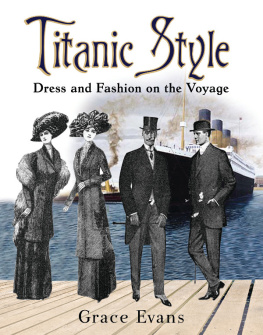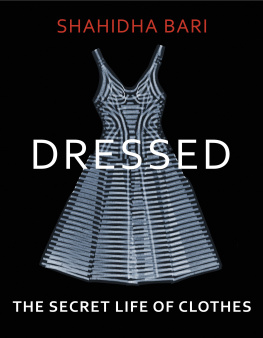


Copyright 2011, 2012 by Grace Evans
First published in 2011 by Moonrise Press, Ludlow
All Rights Reserved. No part of this book may be reproduced in any manner without the express written consent of the publisher, except in the case of brief excerpts in critical reviews or articles. All inquiries should be addressed to Skyhorse Publishing, 307 West 36th Street, 11th Floor, New York, NY 10018.
Skyhorse Publishing books may be purchased in bulk at special discounts for sales promotion, corporate gifts, fund-raising, or educational purposes. Special editions can also be created to specifications. For details, contact the Special Sales Department, Skyhorse Publishing, 307 West 36th Street, 11th Floor, New York, NY 10018 or .
Skyhorse and Skyhorse Publishing are registered trademarks of Skyhorse Publishing, Inc., a Delaware corporation.
Visit our website at www.skyhorsepublishing.com.
10 9 8 7 6 5 4 3 2 1
Library of Congress Cataloging-in-Publication Data is available on file.
ISBN: 978-1-62087-199-7
eISBN: 978-1-62087-740-1
Printed in China
Acknowledgements

I WOULD LIKE TO THANK the following for their help with the creation of this book: Jane Moon and Robert Killick of Moonrise Press, for their confidence and belief in my ability to finish the job; Valerie Cumming, social historian and Chairman of the Olive Matthews Collection, for her advice and encouragement; and Emma Warren, Curator of Chertsey Museum, for her support and for the use of images from the Chertsey collections. Finally, I would like to thank my wonderful family, Alex, Charlotte and Emilia. Without their patience and understanding I would not have been able to complete this project.
Grace Evans
July 2011
Contents

1. Introduction

T HE STORY OF THE TITANIC, her construction, opulence, and tragic loss on her maiden voyage captured public imagination from the very start. The first and strongest reaction was naturally shock at the sheer number of people lost, but this quickly developed into fascination with the human stories that lay behind the stark statistics. The individual experiences of those on board, survivors or victims, crew or passengers, soon began to emerge. They told of tragedy, but also revealed tales of great heroism, luck and survival, providing a permanent bittersweet backdrop that colours all exploration of the phenomenon of the Titanic.
RMS Titanic was launched on the 31 May 1911. At 46,328 tonnes, she was the largest passenger ship constructed at the time. She set sail on her maiden voyage on 10 April 1912 from Southampton, her route taking her to Cherbourg in France, then on to Queenstown (now Cobh) in Ireland. From there she left for New York carrying 2,223 passengers and crew. At around 23.40 on the evening of 14 April Titanic struck an iceberg in mid-Atlantic. Despite being designed to withstand impacts of this kind by the construction of watertight compartments, the damage caused by the collision was too great. At 2.20 a.m. on Monday 15 April, the ship sank with the loss of over 1,500 lives.
As the quest for knowledge of the Titanic continues, attention has turned to the nature of the lost ship itself. Rediscovery through exploration of the wreck, and analysis of surviving documentation, photographs and personal accounts all confirm that she represented an extraordinary achievement born of supreme confidence. Titanics designers and builders made full use of new technology and the industrial advancements of the age. The grandeur of the luxurious interiors and wide-ranging facilities, particularly in the First Class areas of the ship, has come to symbolize the opulence of the Edwardian period and of the years leading up to the First World War. They bear witness to a time of privilege and conspicuous consumption rarely seen before or after. The lavish interiors of First and Second Class contrast with the equally fascinating working areas of the ship, and the more spartan accommodation provided for the many Third Class passengers on board.
In many ways, Titanic was a product of established concepts of class and behaviour that were still rigidly adhered to. However, her time was one of major transition, when old traditions and new ideas coexisted, if not always comfortably. In fact, far from being a Golden Age of consistency and stability, the pre-First World War period was a time of technological, social and cultural upheaval as the old order sought to maintain the status quo in the face of rapid change. The horse and cart now shared the roads with the motor car; aeroplanes were venturing into the skies; and moving picture screens were being installed in music halls. Artists such as Matisse and Picasso were beginning to experiment with the depiction of abstract form, while Diaghilevs exotic and inspirational Ballets Russes took to the stage to delight and challenge audiences in equal measure. At the same time, there was significant social unrest, and ordinary working people in Britain and other Western states sought to improve their working conditions through strike action, bringing about shortages of coal and other commodities, which directly affected the smooth running of the great ocean liners.
The subject of the Titanic offers enormous scope for exploration of the people and history of her time, and their clothing, in all its many and varied manifestations, is a captivating aspect of a remarkable story. By examining what people wore, we gain a fuller and more rounded picture of what life was like on board. Clothing is of course just one component of the whole social picture, but it extends its reach into many other areas of the ships history, and links the story of the Titanic to our own times. The very demographics of the ships population offer a fascinating starting point: a comparatively small group of privileged and wealthy First Class passengers were billeted alongside, but strictly segregated from, much larger numbers of poorer travellers. The ship was a floating microcosm of 1912 society, still bound by the rigidity of a long-established class system and characterized by the polarisation of rich and poor, but experiencing the stirrings of change, both socially and culturally. The wide range of dress worn by those who sailed on Titanic offers not only an historic snapshot of fashion, but a springboard into the lives of virtually all classes and ages at a particular moment in time.
Titanics facilities and interior decoration are important too, not just as the context in which garments were worn, but because the character and appearance of the ship had a direct bearing on the sartorial choices of its passengers. Opportunities for socializing in opulent and formal environments such as the First Class dining saloon called for appropriately smart dress, as dictated by social conventions and the current fashion. The range of sporting activities available required specific types of clothing, and the provision of large promenade areas, offering outdoor space in frequently windy and cold conditions, meant a need for warm yet fashionable outdoor dress. The sleeping quarters lead us to the more private activities associated with clothing, such as the process of dressing and undressing, and the many layers of underwear worn at the time.
Next page





















